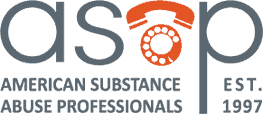By: Nina French
What’s the primary goal of workplace drug testing? Why is it better for employers to anchor their workplace drug testing policy on deterrence?
For decades, employers have relied on workplace drug testing as a risk mitigation tool to effectively deter drug use and help prevent costly incidents. However, with cannabis legalization expanding, so is its use and acceptance. The connection between increasing cannabis availability and increased use of cannabis at work creates significant risks and costs for employers.
To address cannabis use, some legislators and organizations have introduced a series of laws and policies focused on identifying the signs of impairment. Unfortunately, by introducing impairment language, employers may be unable to create a workplace drug testing program that most effectively deters workplace cannabis use and mitigates risk.
The costs of drug use at work
The costs associated with drug use in the workplace are far-reaching, as it can increase employee turnover, absenteeism, productivity and injury costs. According to Injury Facts – an online source of preventable death and injury statistics compiled by the National Safety Council – the total cost of a workplace injury at a construction site when an employee tests positive for cannabis is nearly $80,000. OSHA says employers may save $4 to $6 for every $1 invested in a health and safety program. Workplace drug testing is part of this investment.
It’s critical to consider these and other costs related to data, fiscal and brand risks when determining the effectiveness and the return on investment of drug testing. Anchoring drug testing policies on deterring use is shown to help employers proactively curb incidents and mitigate the costs associated with drug use at work.
The purpose of workplace drug testing
The primary goals of workplace drug testing are to deter employees who recently used drugs from coming to work and detect use that could be a safety risk. To achieve these goals, employers create comprehensive programs with a range of drug testing practices, including as a conditional offer of employment throughout an employee’s tenure and when there’s reasonable suspicion of drug use. Combined, these approaches empower employers to continuously deter use and mitigate risk while being anchored on the detection of cannabis use during the workday – determining impairment is irrelevant and unnecessary.
The impairment challenge
With increased use, discussions around impairment seem to be in constant debate. However, the focus on impairment can unintentionally limit the effectiveness of employers’ drug testing programs for several reasons. First, introducing impairment language shifts the focus from deterrence and tolerates drug use up to a certain amount. Second, impairment is difficult to determine because no agreed-upon standard exists.
So, why isn’t it possible to determine impairment from cannabis yet?
“The main point many people fail to realize is that alcohol had decades, literally decades, of study to get to an impairment standard,” toxicology and workforce drug testing expert Barry Sample, of Quest Diagnostics, explains. “Study data and broad consensus on its outputs are key pieces legislators have been missing as part of determining an impairment standard for cannabis.”
Finally, because of the lack of objective and consistent impairment standards, employers may risk litigation from employees who claim bias because of the subjectivity of determining impairment without standards.
Tying it all together
For more than 40 years, employers have relied on workplace drug testing as a risk mitigation tool to effectively deter drug use, help prevent incidents, and identify recent use in the case of a workplace injury or incident. Laws focused on impairment seem premature and distract employers from optimizing their testing programs. Contrary to the assumption of these laws, workplace drug testing has never been a measure of impairment – it’s a tool to deter use immediately before or during work hours. For an employer in the era of cannabis legalization, a test that measures only recent use, such as a breath test, will be a more objective measure to help enforce policies and optimize the original intent of drug testing – to deter and detect workday use.
French (Aug. 2023). Article retrieved from Safety and Health Magazine, an NSC Publication.


